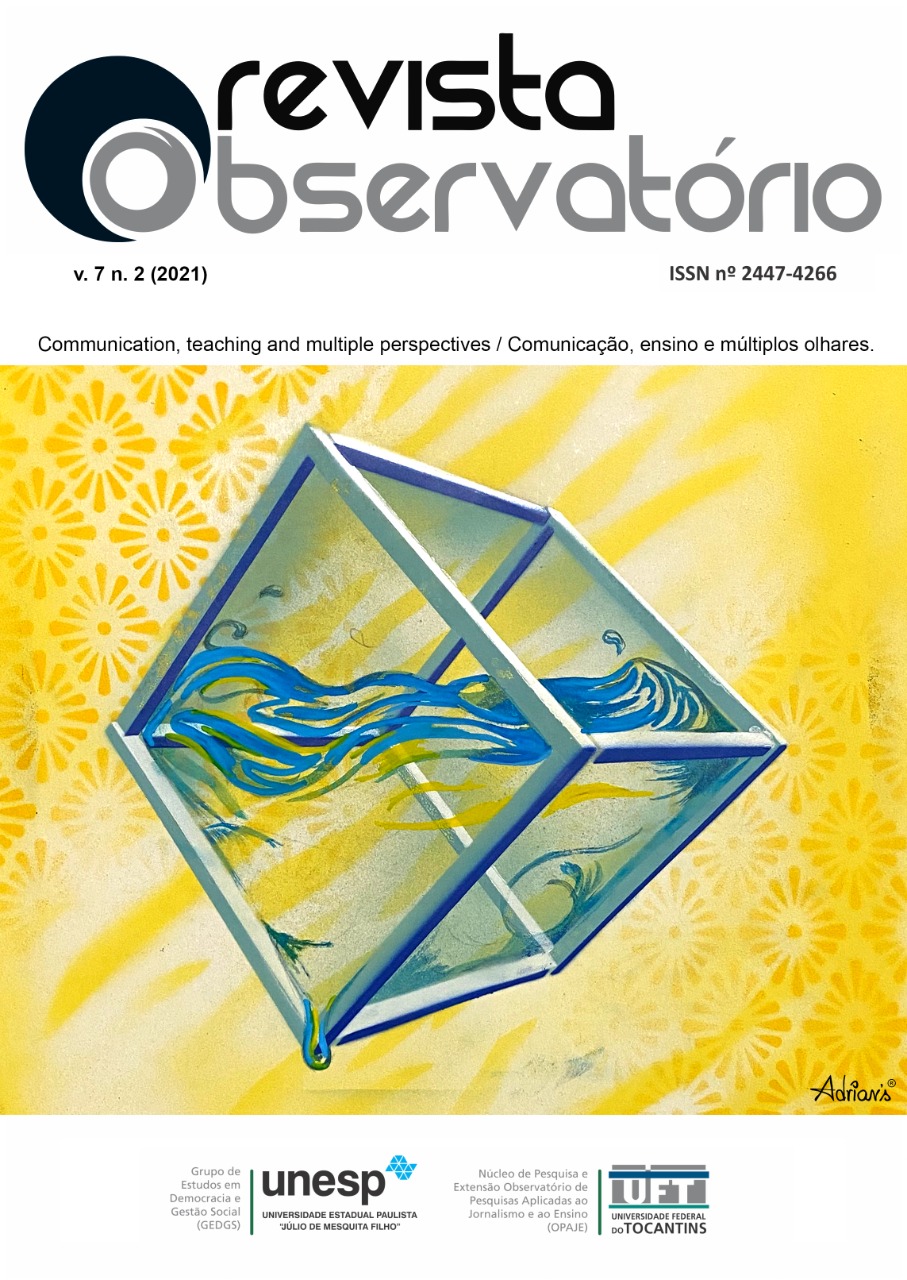LA "B" INVISIBLE: borrado bisexual y bifobia en la serie de televisión Glee
DOI:
https://doi.org/10.20873/uft.2447-4266.2021v7n2a11enPalabras clave:
bisexual erasure, TV series, biphobia, sterotypes, GleeResumen
This article seeks to understand how female bisexuality is represented on the television series Glee, a worldwide phenomenon in the first two decades of the 21st century, through the analysis of the character Brittany Pierce. For this, the content analysis technique was used, based on a qualitative, exploratory, bibliographic and documentary research. It was concluded that Glee abuses negative stereotypes related to female bisexuality, such as indecision, promiscuity and infidelity, despite being a series known for its diversity and positive representation of the LGBTQIA+ community. Glee missed the opportunity to portray bisexuality in a valid and legitimate way, reinforcing the diverse stigmas that hover over bisexual women.
Descargas
Citas
ANGELIDES, Steven. A History of Bisexuality. Chicago: The University of Chicago Press, 2001.
BAUER, Martin; GASKELL, George; ALLUM, Nicholas. Qualidade, quantidade e interesses do conhecimento – Evitando confusões. In: BAUER, Martin; GASKELL, George. Pesquisa qualitativa com texto, imagem e som. Petrópolis: Editora Vozes, 2002.
BUTLER, Judith. Problemas de gênero: Feminismo e subversão da identidade. Rio de Janeiro: Editora Civilização Brasileira, 2003.
CONGRESSO BRASILEIRO DE CIÊNCIAS DA COMUNICAÇÃO, 43. 2020, Modalidade virtual. Apagamento, estereótipos e preconceito: a representação da bissexualidade feminina na série televisiva Glee.
DESCHAMPS, David; SINGER, Bennett. LGBTQ Stats: lesbian, gay, bisexual, transgender, and queer people by the numbers. New York: The New Press, 2017.
EISNER, Shiri. Bi: Notes for a Bisexual Revolution. Berkeley: Seal Press, 2013.
ESQUENAZI, Jean-Pierre. As Séries Televisivas. 1. ed. Lisboa: Edições Texto & Grafia, 2011.
GARBER, Marjorie. Bisexuality and the eroticism of everyday life. New York: Editora Routledge, 2000.
GLAAD ANNUAL REPORT. Where Are We on TV. Los Angeles: Gay & Lesbian Alliance Against Defamation, 2009. Avaiable in: https://www.glaad.org/publications/tvreport09. Access in: 13 mar. 2021.
GLAAD ANNUAL REPORT. Where Are We on TV. Los Angeles: Gay & Lesbian Alliance Against Defamation, 2020. Avaiable in: https://www.glaad.org/whereweareontv20. Access in: 13 mar. 2021.
GLEE. Production: Brad Falchuk, Ian Brennan e Ryan Murphy. Hollywood: Fox, 2009.
KALLAS, Christina. Na sala de roteiristas: conversando com os autores de Friends, Família Soprano, Mad Men, Game of Thrones e outras séries que mudaram a TV. 1. ed. Rio de Janeiro: Jorge Zahar Editor Ltda., 2016.
KELLNER, Douglas. A Cultura da Mídia. Bauru: Editora da Universidade do Sagrado Coração, 2001.
LINS, Beatriz; MACHADO, Bernardo; ESCOURA, Michele. Diferentes, não desiguais: a questão de gênero na escola. 1 ed. São Paulo: Editora Reviravolta, 2016.
MOURA, Cláudia Peixoto de (org.); LOPES, Maria Immacolata Vassallo de. Pesquisa em comunicação: metodologias e práticas acadêmicas. Porto Alegre: EDIPUCRS – Editora Universitária da PUCRS, 2016.
O’GUINN, Chris. Snails & Oysters: The Bisexual Perspective on… “Buffy” and “Glee”. Logo TV. New York, March 16, 2011. Avaiable in:
http://www.newnownext.com/snails-oysters-the-bisexual-perspective-on-buffy-and-glee/03/2011/. Access in: 23 out. 2019.
SEFFNER, Fernando. Derivas da masculinidade: representação, identidade e diferença no âmbito da masculinidade bissexual. Porto Alegre: Universidade Federal do Rio Grande do Sul, 2003.
THOMAS, Fabiana Marsiglia. A representação da bissexualidade feminina e masculina nas séries de TV norte-americanas Glee e Crazy Ex-Girlfriend. Porto Alegre: Escola Superior de Propaganda e Marketing – ESPM-Sul, 2020.
YOSHINO, Kenji. The Epistemic Contract of Bisexual Erasure. California: Stanford Law Review, 2000.
Publicado
Cómo citar
Número
Sección
Licencia
[PT] Autores que publicam nesta revista concordam com os seguintes termos:
1. Autores mantém os direitos autorais e concedem à revista, sem pagamento, o direito de primeira publicação, com o trabalho simultaneamente licenciado sob a Creative Commons Attribution License (CC BY-NC 4.0), permitindo o compartilhamento do trabalho com reconhecimento da autoria do trabalho e publicação inicial nesta revista.
Leia todos os termos dos direitos autorais aqui.

